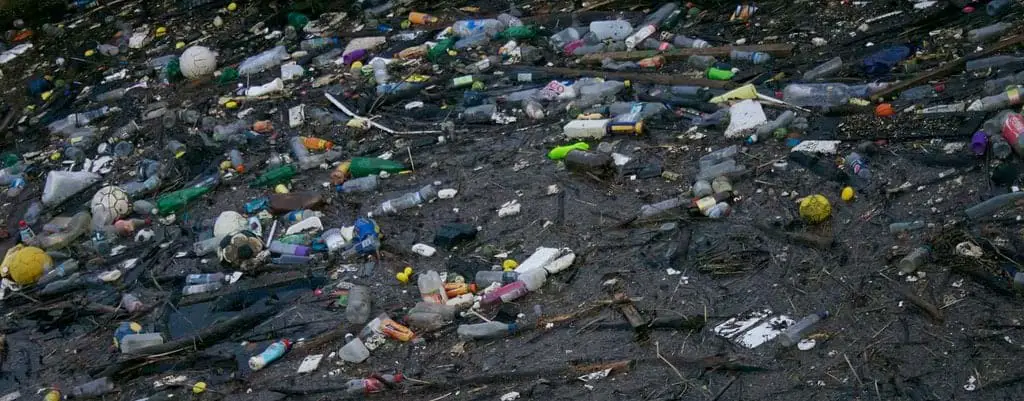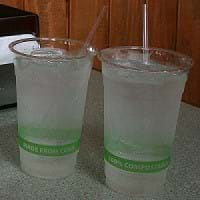Do You Use Bioplastics? Discover The Pros And Some Alarming Cons
Checkout The Advantages and Disadvantages of Bioplastics

The goal of biodegradable plastics is to provide a less harmful plastic product for our environment while still meeting up to consumers needs. Conventional plastics primarily use petroleum oil as the primary raw material for their production. On the other hand, Bioplastics are using all-natural plant-based raw materials such as corn, sugars, fruit peels potatoes, etc., to produce their product.
Being made from natural materials allows bacteria, and fungi found naturally in our environment to naturally metabolizes the plastics.
We have scoured the net to find all the different pros and cons that bioplastics can have on our environment.
So keep reading and judge for yourself if degradable plastic is all its cracked up to be.
Bioplastics Advantages and Disadvantages
Here are 5 Benefits of using bioplastics
Created With Natural Raw Materials
Natural plant materials will biodegrade much faster than traditional plastics will. A Classic plastic drinking bottle will take 450 years to degrade completely.
To make matters even worse, many of the traditional plastics used will require the addition of nitrogen, phosphorus, and other nutrients. These are necessary so it can overcome its lack of biodegradability and allow petroleum biodegradation to proceed at the optimal rate.
Using products with rapid biodegradation like bioplastics will allow for our landfill space to get reclaimed at a faster rate.
Created From a Renewable Resources

By using raw plant material to construct the plastic, we are using a renewable and sustainable material. Every year outdoors(or multiple times indoors) crops can continually get grown for the production of plastic. Bioplastics have the added benefit of having natural short biodegradability properties inherited from the material they get made from.
Less to no Toxic Leftovers
These natural materials will break down without releasing toxins. Using natural products allows the elements to get converted into simple inorganic molecules, water, carbon dioxide, methane, and biomass. Each year we can continue production since we are making it from renewable resources.
On the other hand, the older methods of producing plastics with petroleum products have the issue of using a limited, finite resource. These plastic materials will also release toxins into our soil, air, and waters if they are not properly recycled.
Professor Kartik Chandran believes that compared to traditional plastics, "bioplastics are a significant improvement."
Biodegradable Plastics can get Composted.
When looking at biodegradable plastics, it is best to use ones that get rated as compostable. These plastics will biodegrade in a compost site. These bioplastics will get converted to carbon dioxide, water, inorganic compounds, and biomass, leaving no toxic residue.
Produces A Smaller Carbon Footprint
Bioplastics have a smaller carbon footprint. A 2017 study showed that we could cut U.S. greenhouse gas emissions by up to 25 percent if we switched production of traditional plastic to corn-based PLA.
Plastics that get produced from renewable energy are showing the most promise for substantially reducing our greenhouse gas emissions.
Permanent bioplastic (used for products where durability and robustness are vital) are made to be similar to polyethylene and other conventional plastics. These bioplastics will store CO2 forever. Even if the plastic is recycled many times, the CO2 initially taken from the atmosphere will remain isolated and hidden away.
Here are 8 Disadvantages of Bioplastics
So Just What Are The Problems With Biodegradable Plastics?
Fertilizers, Pesticides, and Chemicals Used
Sadly a 2010 study from the University of Pittsburgh found that when you take into account, the fertilizers plus the pesticides generally used in growing the crops plus the chemicals required in the processing needs to turn these organic materials into refined plastics. When all of these factors get taken into account, the bioplastics caused equal to a higher amount of pollutants to get generated.
The study also found that biopolymers surpassed most of the petroleum-based polymers for ecotoxicity and carcinogen emissions.
Ozone Depletion
The bioplastics products have also contributed more to ozone depletion than the processing of traditional plastics.
Extensive Land Requirments
Another problem is the extensive land use that bioplastics currently require for producing at mass scale(alternative collection methods are getting reviewed). While some people fear this could cause an increase in price for foods like bread and pasta from the land requirements.
To produce 2.2 pounds of polylactic acid (a frequently used bioplastic), it will require up to 6 pounds of corn.
Are Biodegradable Plastics Really Biodegradable?
Unfortunately, many of these bioplastics have a low chance of degrading when thrown into our landfills.
The settings in our landfills may not have enough microorganisms, oxygen, heat, or sunlight to allow these products to biodegrade fully.
Jacqueline McGlade, the chief scientist at the UN Environment Programme, called biodegradable plastics “well-intentioned but wrong."
Compostable, But With a Catch
Many of these biodegradable plastics like PLA(the most common bioplastic in use) require pretty extreme amounts of heat(above 50°C or 122°F )for the biodegradation process to begin. Specific processing facilities are required to provide these conditions. And it also relies on the public, placing them into the correct container for the recyclable type they are.
These requirements for biodegradation can present a severe problem for our environment over time. Many of these plastic products will find their way into our landfills, oceans, and lakes where the temperature can stay significantly lower. While in the waters, it will break the plastic items to micron sizes. These materials can take a long time to decompose back into our environment entirely when under these conditions.
Creates Issues For Our Current Recycling Systems
Having bioplastics mix with there non-biodegradable counterparts (nonbiodegradable plastics) creates a product that is brittle and unstable. Batches of plastics that get mixed with their biodegradable counterparts will no longer be able to be recycled, preventing them from later being reused. At this point, we have no real systems in place that can recycle oil-based plastics mixed with biodegradable ones.
Some Bioplastics Can Contain Small Pieces of Metal
During the decomposition process, it is possible that some bioplastics(mainly plastic bags) will release metals. These metals get created because of the original items, and the manufacturing process(the polyethylene created) could contain high levels of manganese. This can prevent these items from breaking down in the composting process used for bioplastic products.
In 2009 it was reported by the Guardian that it had found biodegradable plastic bags with high amounts of cobalt and lead. Having these metals in the products has lead people to question the actual toxicity elements that could be left behind after decomposition of a bioplastic happens.
Some People Will Litter More
Unfortunately, when some people switch to bioplastics, they will start to litter more. Some people think that since the label says it is biodegradable, they can leave the litter anywhere without causing any consequences for the environment.
Conclusion
While we are making progress in finding ways to reduce pollution from plastics, It looks like we are still some time away from creating a plastic that will be able to decay under normal circumstances.
Plastic pollution in our waters continues to reach incredibly high levels. To correct this, we need plastic products that can naturally and quickly decompose in our oceans and lakes.
So while bioplastics are a step in the right direction. We still have much more research needed until we have found a real solution to our plastic garbage problems.
You May Also Like
Differences Between Biodegradable and NonBiodegradableReference
Pitt Researchers: Plant-Based Plastics Not Necessarily Greener Than Oil-Based RelativesThe Truth About Bioplastics
Biodegradable Plastic Bags: Are They Really Eco-Friendly
A Review: Investigation of Bioplastics.